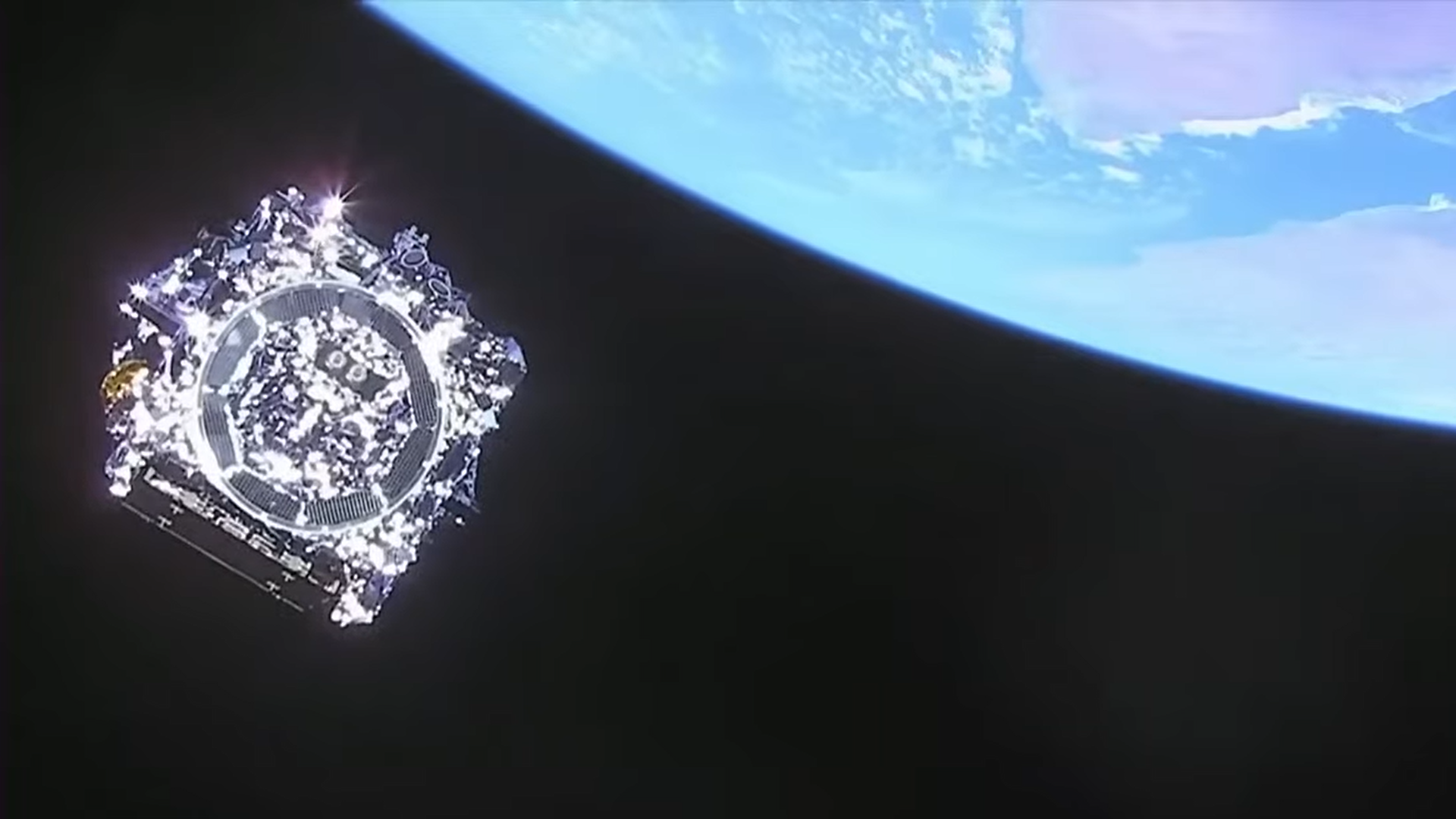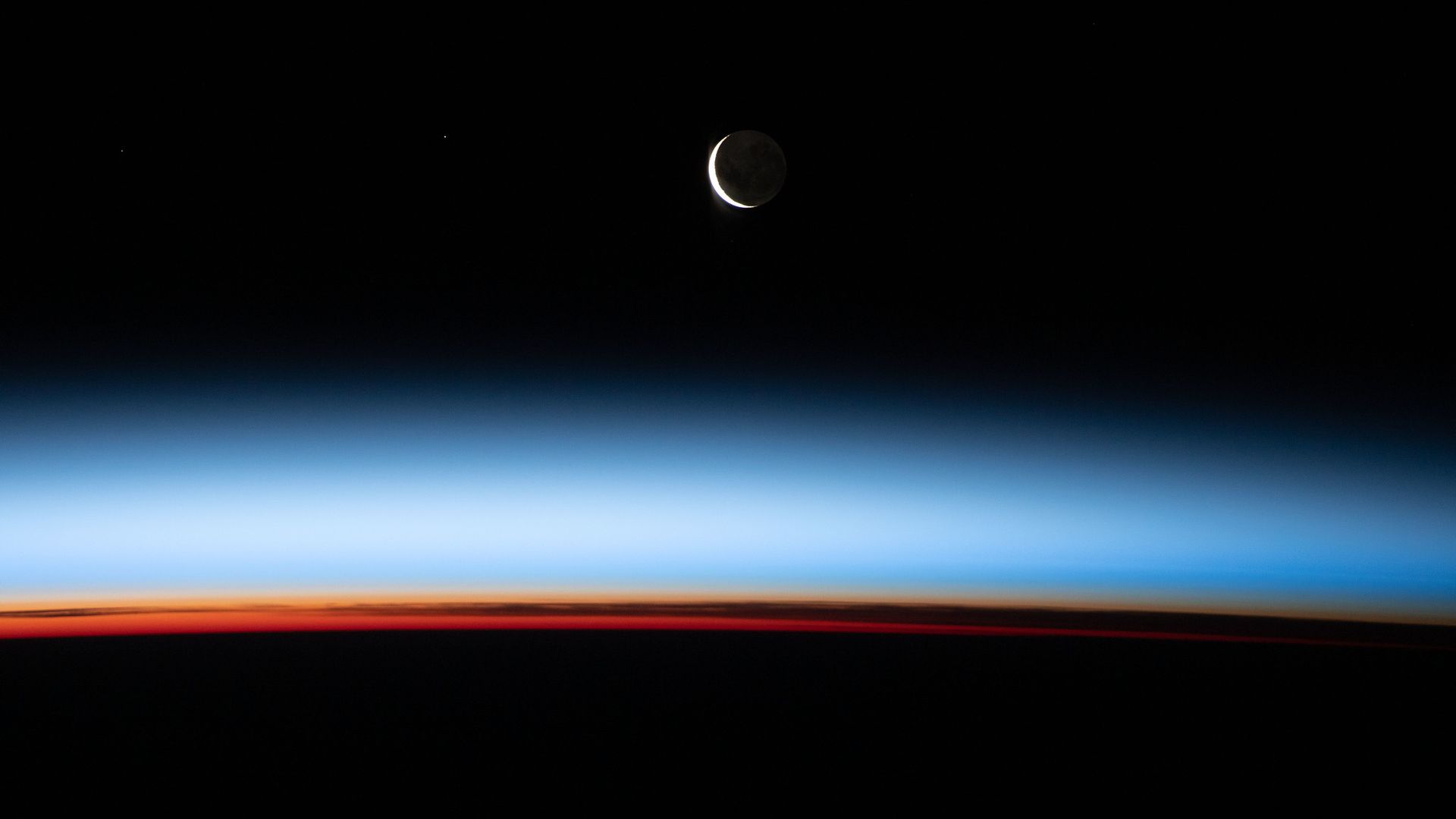| | | | | | | Presented By Maxar | | | | Axios Space | | By Miriam Kramer ·Jan 04, 2022 | | Thanks for reading Axios Space. At 1,138 words, this newsletter is about a 4-minute read. - Please send your tips, questions and 2022 musings to miriam.kramer@axios.com, or if you received this as an email, just hit reply.
| | | | | | 1 big thing: Private space companies' 2022 promises to keep |  | | | Illustration: Aïda Amer/Axios | | | | The private human spaceflight industry delivered on long-held promises in 2021, but 2022 is the year where it will need to prove itself to the public. Why it matters: The space industry is predicted to be worth more than $1 trillion within the next 10 years. But for that to happen, companies will need to turn the extraordinary feats of the last year into routine operations. What's happening: Last year, Blue Origin and Virgin Galactic both launched their founders — Jeff Bezos and Richard Branson, respectively — to space for the first time. - Blue Origin followed that up with two more suborbital human flights in 2021.
- Those missions marked the culmination of decades of work for the two companies and delivered on a promise of sending more nonprofessionals to space.
- SpaceX also consistently launched crewed missions to the International Space Station for NASA, a major customer that will influence the continued growth of the company, and it had a huge success with four nonprofessionals flying to orbit without a pro-astronaut onboard on the Inspiration4 mission.
What to watch: Now, those companies are trying to demonstrate they can consistently deliver these services — and turn a profit from them. - That means flying more. Blue Origin, Virgin Galactic and SpaceX are expected by space watchers to fly people to space consistently and safely this year. That will be key to determining whether the successes of the last year are one-offs or if they can get into "some sort of rhythm and make some money," Carissa Christensen, founder and CEO of BryceTech, told me.
- SpaceX is planning to launch Axiom Mission-1 to the International Space Station early in 2022, which will act as a follow-up to Inspiration4 and could be an indicator of the market for more amateur orbital flights.
- It's hard to gauge whether private companies like Blue Origin are profitable — because their finances aren't open to the public — but routinely launching, which is expensive, can act as a proxy for it, Christensen said.
Yes, but: Transforming these missions into routine services won't be easy. - It will require companies to increase launch cadence, which is challenging because they're working with relatively new technology and within complicated regulatory frameworks.
The big picture: The public demand for these types of services could also become clearer this year. - Studies indicate there is "substantial demand" for suborbital spaceflight, Christensen says. "You have a larger pool of people that can afford it now."
- According to a May 2021 note sent to investors by analysts Ken Herbert and Austin Moeller, of Canaccord Genuity, the suborbital tourism market could reach $8 billion by 2030 with 1 million potential customers.
Between the lines: Demonstrating they can turn a profit will be important for the companies working to make consistent, private human spaceflight a reality, but it's likely a small portion of the revenue for the space industry overall. - However, human spaceflight will be one of the most important public-facing elements of the overall industry. Major failures and successes will shift the way the public sees the industry, adding to its support or detracting from it.
The bottom line: Last year, the private spaceflight industry showed what it can do, but this year, these companies will need to capitalize on it. |     | | | | | | 2. Who wants to go to the Moon? |  Data: Axios/Momentive poll; Chart: Kavya Beheraj/Axios Private human spaceflight has advanced tremendously in the last year, but many ordinary people aren't ready to visit the Moon themselves, according to a new Axios/Momentive poll. Why it matters: Private space tourism today caters to an ultra-rich clientele, but eventually, the companies making a business out of sending people to space want to widen their reach to many more people. Driving the news: The new poll found 61% of adults surveyed wouldn't be interested in taking a trip to the Moon even if money weren't a factor. - Gen Z respondents, however, are more interested in a lunar voyage: 55% of people polled in that age bracket say they would take a trip to the Moon if money weren't an issue.
- The poll also found that 53% of respondents think SpaceX is "leading the push into space" ahead of Blue Origin, Virgin Galactic and Boeing.
The big picture: Space tourism destined for the Moon is still far from a reality. At the moment, most tourism to space is centered on shorter suborbital flights and trips for people to orbit. - However, companies — specifically SpaceX — are working to make lunar tourism happen one day.
- SpaceX is building a lunar lander for crewed NASA missions to the Moon, but that same technology can be used to one day deliver paying tourists to the lunar surface.
- The Elon Musk-founded company also has plans to send a tourist flight called dearMoon around the Moon without landing on the surface.
Read more about the poll and methodology. |     | | | | | | 3. The JWST's road ahead |  | | | The James Webb Space Telescope not long after its release from its rocket. Photo: NASA | | | | After its Christmas Day launch, NASA's James Webb Space Telescope has started to successfully deploy on the way to its perch 1 million miles from Earth. Why it matters: The deployment of the $10 billion telescope is one of the riskiest parts of its mission. Getting through this phase will pave the way for the JWST's important science to come. What's happening: This week, engineers "tensioned" the JWST's tennis court-sized sun shield that will keep the telescope's instruments cold, allowing it to more easily see out into the universe in infrared light. - The first three layers of the five-layer sun shield deployed Monday, with the final two successfully tensioned on Tuesday.
- "This is a really big moment," JWST project manager Bill Ochs said after the sun shield was fully tensioned.
- Now that all five layers of the sun shield are through tensioning, the telescope is about 70%–75% of the way through the 344 single points of failure that could spell major trouble for the telescope.
What's next: The JWST's next big event is the deployment of its secondary mirror used to reflect light back to its large gold-coated primary mirror. - That deployment should happen later this week.
- If all goes according to plan with its commissioning and deployments, the JWST should start science operations toward the middle of the year.
|     | | | | | | A message from Maxar | | Precision data and insight for when there is no room for error | | |  | | | | Whether monitoring assets, an adversary or an asteroid, information and tools delivered with speed and precision can be the difference between taking a best guess and making the right decision. Maxar delivers precision from hardware to pixel. Learn more. | | | | | | 4. Out of this world reading list |  | | | Illustration: Sarah Grillo/Axios | | | | Astronomers discover largest group of "rogue planets" yet (Jasmine Hicks, The Verge) China's Mars orbiter snaps amazing selfies above Red Planet (Andrew Jones, Space.com) There is no Planet B (Sarah Scoles, Popular Science) Sync your calendar with the solar system (New York Times) |     | | | | | | 5. Weekly dose of awe: A crescent Moon rising |  | | | Photo: NASA | | | | Traveling to the International Space Station is worth it for the views. - A crescent Moon shines during a sunset aboard the space station in December as it flew 268 miles above the Pacific Ocean.
- And now it looks like those views should be available for at least a little while longer. Just before the end of the year, NASA announced that the Biden administration would extend the life of the ISS through 2030.
|     | | | | | | A message from Maxar | | Precision data and insight for when there is no room for error | | |  | | | | Whether monitoring assets, an adversary or an asteroid, information and tools delivered with speed and precision can be the difference between taking a best guess and making the right decision. Maxar delivers precision from hardware to pixel. Learn more. | | | | Big thanks to Alison Snyder, David Nather, Sam Baker and Sheryl Miller for editing this week's edition. If this newsletter was forwarded to you, subscribe here. 🌙 |  | Bring the strength of Smart Brevity® to your team — more effective communications, powered by Axios HQ. | | | | | | Axios thanks our partners for supporting our newsletters. If you're interested in advertising, learn more here.
Sponsorship has no influence on editorial content. Axios, 3100 Clarendon Blvd, Suite 1300, Arlington VA 22201 | | | You received this email because you signed up for newsletters from Axios.
Change your preferences or unsubscribe here. | | | Was this email forwarded to you?
Sign up now to get Axios in your inbox. | | | | Follow Axios on social media:    | | | | | |
No comments